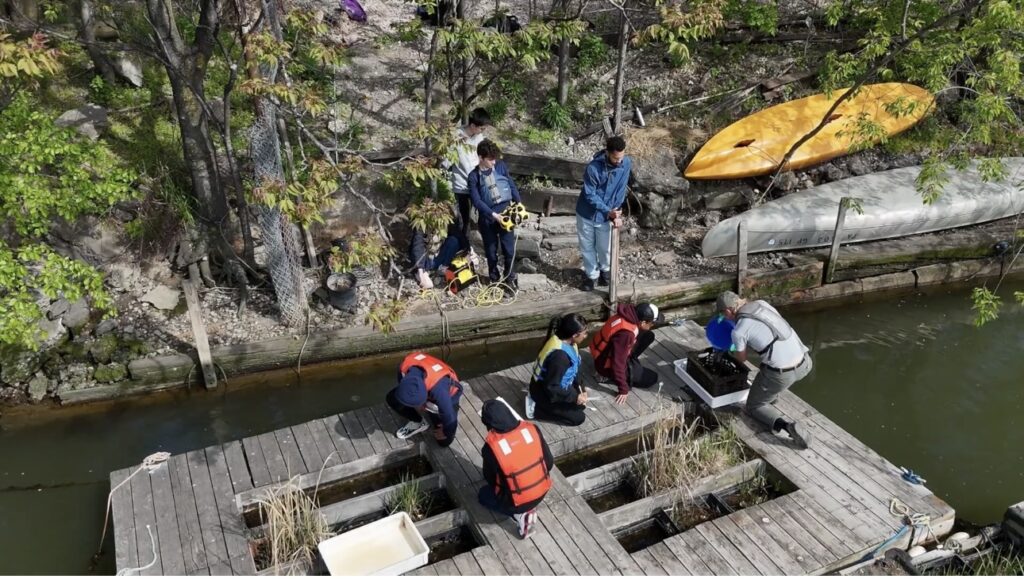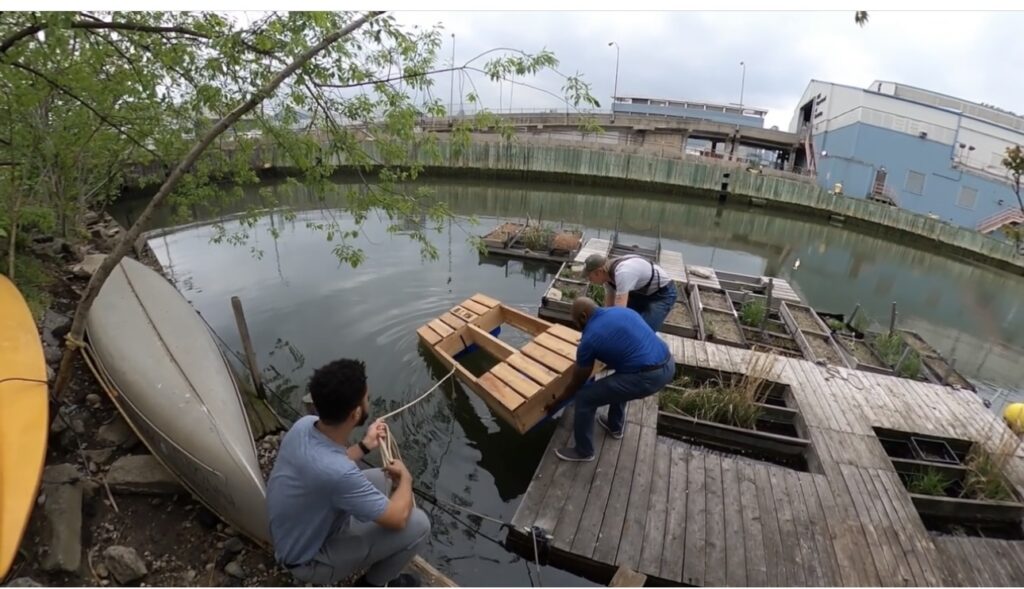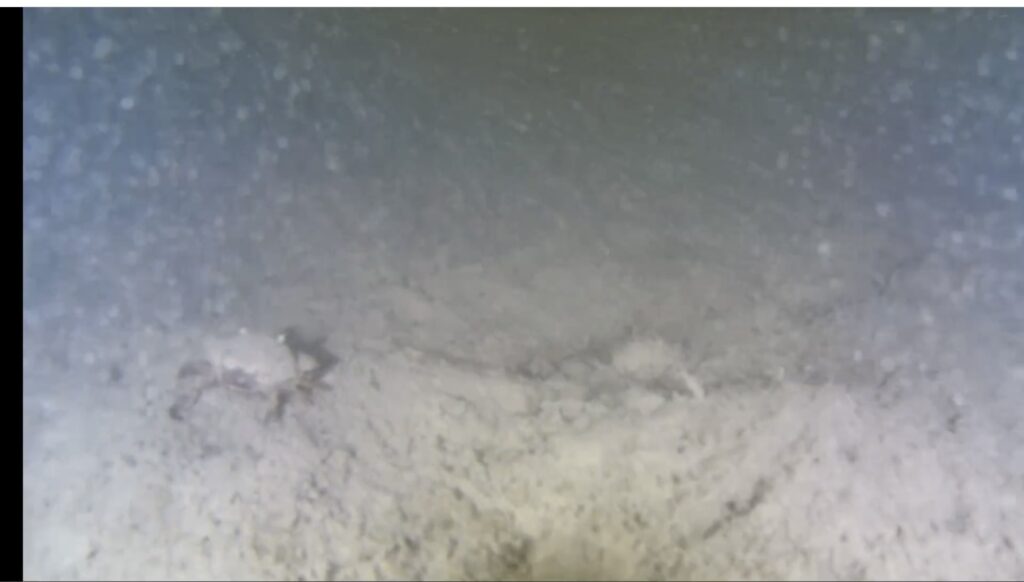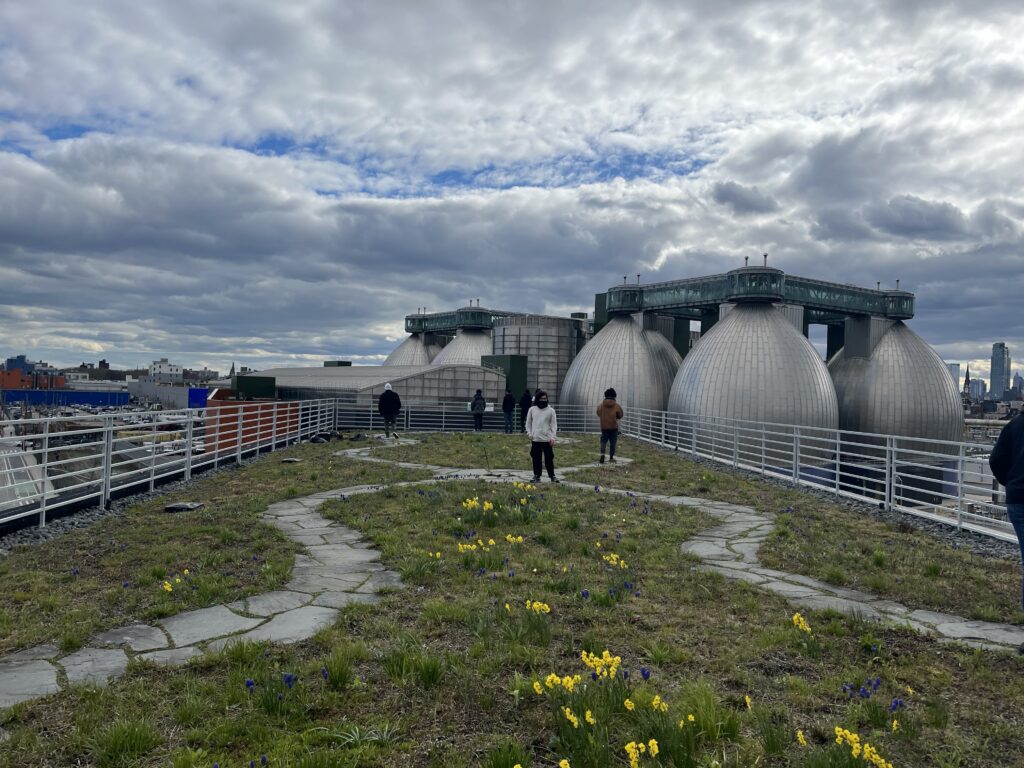See WHSAD students’ Newtown Creek StoryMap and student reflections below:
-Derek Ramos Matos, 2024 WHSAD Valedictorian
Participating in the Newtown Creek Alliance “Living Dock” project has been a transformative journey, blending art, science, and community activism. This initiative, aimed at revitalizing and sustaining the ecological health of Newtown Creek, has not only been working on reshaping the local environment but also deeply influencing the personal and academic growth of students like myself.

The Living Dock, a remarkable synthesis of art and ecology, serves as a floating ecosystem designed to foster marine biodiversity. This initiative stands as a testament to how innovative environmental solutions can rejuvenate urban waterways, allowing for the possibility to reestablish vibrant habitats for aquatic life while enhancing water quality. The Living Dock is more than an environmental effort; it is a living sculpture that I feel honored to have worked on.
For students like myself, the Living Dock project offered an extraordinary learning opportunity. Engaging with this initiative has allowed me to delve into various fields such as marine biology, environmental science, and urban ecology, to name a few. The hands-on experience of working with a team to design, construct, and monitor the dock has enriched my understanding of ecological systems and the critical importance of sustainable practices. As a rising architecture student I was able to experience first hand the impacts of bad city planning and how the designs architects make impact not only the people but the environment as well. This project has shown me the power of interdisciplinary collaboration and the impact that dedicated community efforts can have on local ecosystems.
Moreover, the Living Dock project has been instrumental in fostering a sense of community and connection. Working alongside the passionate members of the Newtown Creek Alliance and fellow students has led to the formation of meaningful friendships and professional relationships. These connections extend beyond the project itself, creating a network of like-minded individuals committed to environmental stewardship. The teamwork involved in this initiative has been as enriching as the technical skills and knowledge gained with each member being able to contribute their specialties and gifts.

Reflecting on my involvement with the Newtown Creek Alliance Living Dock project, I am filled with a sense of accomplishment and gratitude. This experience has not only honed my academic and professional skills but also deepened my knowledge of sustainability which is a problem that as an architect I will face. The friendships and memories made through this project will remain with me, serving as a constant reminder of what can be achieved when community, creativity, and science come together in pursuit of a common goal.
In conclusion, the Living Dock project stands as a beacon of hope and innovation, demonstrating how collaborative efforts can lead to substantial environmental and social benefits. As I move forward in my academic and professional journey, the lessons learned and the relationships built during this project will continue to inspire and guide me. The Newtown Creek Alliance has shown me that positive change is possible, and I am honored to have been a part of this remarkable endeavor.
-Alonzo Jones, Class of 2026

The partnership between WHSAD, LaGuardia Community College, and the Newtown Creek Alliance (NCA) produced an informative and eye opening experience about New York’s wastewater pollution and waterbody neglect. With the help of our partners, we were able to use the different skills of the students and produce a site/science analysis of New York’s waste water problem along with Newtown creek pollution and aquatic life biodiversity. The project that we decided to focus on was the living dock (LD). The living dock is a wooden flotation structure put into the water to assess the water’s habitat and biodiversity. This one project/partnership has opened many opportunities for the students of WHSAD.
Community visits and site analysis
Throughout the course of the project we visited the creek many times. On March 28th, we took a tour of the NCA headquarters. The project facilitator Gus Perry and professor Sarah Durand informed us about the history of the creek followed by a tour of their green roof. With 1.4 acres of green roof, we experienced the vision of the NCA and its beauty.
This project spoke to the problems that our environment faces and introduced a new environmental perspective. Speaking for myself, I’ve become more environmentally conscious. “I learned why the water is so polluted, and how it has become polluted. I’m surprised by the life still living in the creek,” says Jake, the 10th grader who facilitated the underwater drone operation on the project. Most of the project was experimental and we met a lot of surprises.
The surprising benefits
The main surprise of the project isn’t actually the experience itself, it’s the continued projects and opportunities that precede the project. After presenting the Newtown Creek project to WHSAD administrators, faculty, and students, we attended the North Brooklyn Science Symposium (NBSS). Mr. Rodriguez had this to say about the symposium and the project as a whole, “There are three things: the experiential learning, students introduction to environmental science, and the incorporation of technology.”
A Catalyst for Future Projects

The impact of the Living Dock project extended beyond our initial goals. It not only provided an invaluable hands-on learning experience but also ignited a passion for environmental science among the students. The use of technology, such as the underwater drone, allowed us to explore and document the underwater ecosystem in ways we had never imagined. This integration of technology and science not only enhanced our understanding but also made the project more engaging.
The Living Dock project has set a precedent for future environmental initiatives at WHSAD. It has encouraged students to think critically about their surroundings and consider careers in environmental science and technology. The success of this project highlights the importance of community partnerships in education, demonstrating that real-world learning experiences can significantly enrich the traditional classroom setting.
Looking Ahead
As we look to the future, the partnerships we’ve formed with LaGuardia Community College and the Newtown Creek Alliance will continue to be vital. We are planning further projects that will build on the foundation laid by the Living Dock initiative. These future projects will aim to delve deeper into environmental issues, providing more students with the opportunity to engage in meaningful, hands-on learning experiences.
The Living Dock project is just the beginning. It has opened doors to new possibilities and has shown us that with collaboration and determination, we can make a difference in our environment. The students of WHSAD are now more inspired than ever to continue exploring, learning, and making an impact.
In conclusion, the Living Dock project has been a transformative experience for all involved. It has highlighted the importance of environmental stewardship and the role of education in fostering a more sustainable future. The continued support from our partners and the enthusiasm of the students ensure that the legacy of this project will endure, paving the way for a cleaner and more conscious world.


